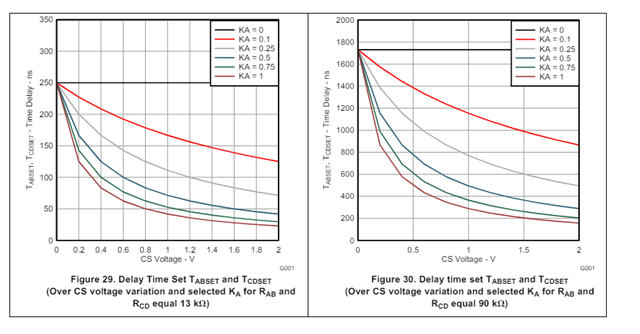Other Parts Discussed in Thread: TINA-TI
Hello,
I am requesting an equivalent circuit or functional block diagram looking into DELAB or DELCD pins. I need to reduce the dead time at heavy loads to increase efficiency while increase the dead time at light loads to allow ZVS. I am already using adjustable delay, which is helping, but doesn't allow me to accomplish the above to the extent needed.
My goal was to reduce the effective value of resistance connected to the DELCD pin (as seen by the UCC28950 controller) at heavy loads...I was hoping that have a functional diagram looking into the DELCD pin would help me determine a way to do that.
Any suggestions would be appreciated.
Thank you,
Nitish Agrawal



